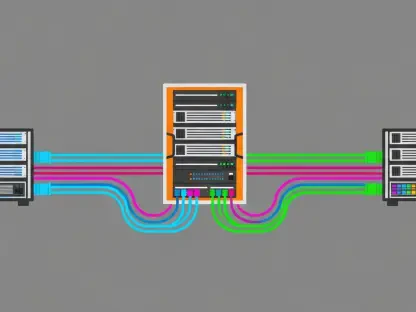In recent years, the Orange County, California branch of the global nonprofit organization, United Way, has undergone a significant technological transformation. Over the past six years, the incorporation of cutting-edge technology, including artificial intelligence (AI), has revolutionized the way they deliver social services. This transformation has not only enhanced service delivery but also reduced operational costs, benefiting both the organization and those in need.
A New Era in Social Services
The organization’s Homeless Management Information System (HMIS) has been central to this modernization effort. This system allows for seamless data sharing among care providers and is instrumental in coordinating services for the homeless. Used by over 1,000 social service providers across California, HMIS exemplifies large-scale data integration and reflects the scope of the organization’s operations.
The integration of AI into the HMIS has been a game-changer. By analyzing data trends, AI can predict potential care needs, enabling the organization to provide preventative services to those at risk of becoming homeless. This proactive approach marks a significant advancement in the field of social services, highlighting the vital role of technology. By employing AI, the Orange County United Way can now identify early indicators of homelessness risk, allowing for timely interventions that can prevent individuals and families from losing their homes.
This technological capability not only enhances the immediate outcomes for those in need but also exemplifies a broader shift towards data-driven, preventive measures. AI’s predictive power empowers care providers to allocate resources more effectively, thus addressing the root causes of homelessness before they escalate into more severe crises. Consequently, this results in a more sustainable and impactful approach to social services.
Pandemic-Driven Innovation
The COVID-19 pandemic forced a rapid shift in technological focus for the Orange County United Way. The organization developed web and mobile applications to manage emergency financial and rental relief programs and a housing navigation app. These innovations quickly showcased the organization’s capabilities in technology-driven initiatives. As the pandemic created unprecedented demand for social services, the United Way’s ability to adapt and provide efficient solutions became critical in supporting vulnerable populations.
The success of these applications did not go unnoticed. Neighboring counties and cities sought Orange County United Way’s assistance in distributing their pandemic relief benefits. By the end of 2022, the organization’s applications had facilitated the distribution of over $91 million to around 10,000 families, demonstrating their significant impact. This widespread recognition underscored the effectiveness of the United Way’s technological solutions and positioned the organization as a key player in regional relief efforts.
Moreover, these pandemic-driven innovations set the stage for further advancements and cemented the importance of adaptability and technological proficiency in meeting community needs. The organization’s swift response to the pandemic highlighted its commitment to leveraging technology for the greater good, thus ensuring that those in need receive timely and efficient support.
Expansion and Integration
Building on these successes, the Orange County United Way expanded its service capabilities in 2023 by acquiring the 211 OC service. This helpline connects individuals to essential services and care providers, and its new web and mobile applications have improved the searchability and accessibility of services across multiple providers. The acquisition of 211 OC represented a significant step forward in the organization’s mission to streamline and enhance service delivery through technological integration.
Further investment in technology, including a data warehouse for data movement and analytics, has allowed the organization to scale its services dramatically. From 31 providers to over 100, the upgraded solutions underscore significant growth and broadened impact. These enhancements have not only expanded the reach of Orange County United Way’s services but have also improved the efficiency with which they can respond to community needs.
The integration of advanced data analytics enables the organization to have a more comprehensive understanding of service demand and resource allocation. By analyzing trends and patterns, the United Way can optimize its operations and ensure that services are delivered where they are needed most. This level of integration exemplifies a modern approach to nonprofit management, where data-driven insights drive strategic decision-making and resource management.
Enhancing Coordination and Prediction
An essential component of this technological evolution is the closed-loop referral system, which streamlines coordination among various care providers. This system ensures efficient referrals and feedback on outcomes, reducing the navigation burden on health care and service providers and integrating tightly with the HMIS platform. The closed-loop system enhances collaboration among different agencies, creating a more cohesive network of support for individuals and families in need.
Rose Buenaventura, the Vice President of Development Operations at Orange County United Way, highlights the power of merged systems and data in predicting homelessness trends. Using patterns in service requests, the organization can identify at-risk individuals and offer preventative resources, aligning with their proactive support goals. For example, by tracking repeated calls for assistance with transportation, utilities, or rent, the United Way can anticipate potential crises and intervene before homelessness occurs.
Predictive analytics in social services represents a paradigm shift towards proactive intervention. Rather than responding reactively to crises as they arise, the United Way now has the tools to address potential issues before they escalate. This approach not only improves individual outcomes but also promotes long-term stability and well-being within the community. By leveraging technology to predict and prevent homelessness, the United Way sets a powerful example for other organizations striving to enhance service delivery.
The Cost-Saving Power of AI
In recent years, the Orange County, California branch of the global nonprofit organization, United Way, has experienced a considerable technological evolution. Over the past six years, they’ve integrated advanced technologies, including artificial intelligence (AI), fundamentally transforming how they provide social services. This technological overhaul has not only improved the efficiency and effectiveness of their service delivery but also significantly cut operational costs. As a result, the organization has become more efficient, and those in need have benefited from higher-quality services. This innovative approach has set a benchmark for how nonprofits can leverage technology to enhance their impact, ensuring that resources are used more effectively and reaching more people. United Way’s transformation is a profound example of how embracing technology can empower organizations to do more good in their communities, ultimately leading to a greater overall impact.









